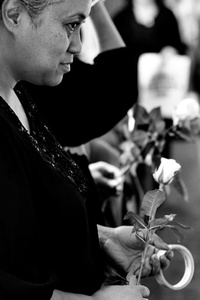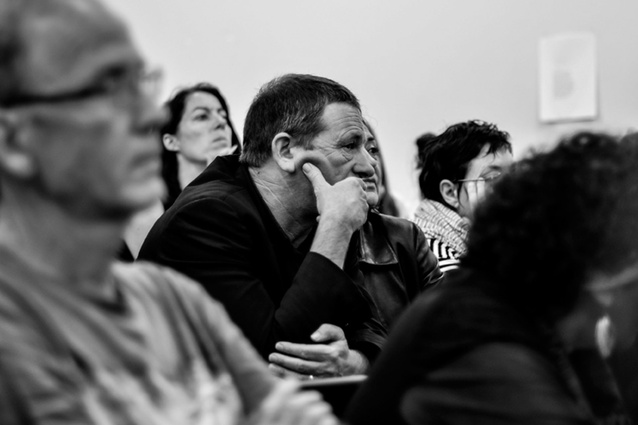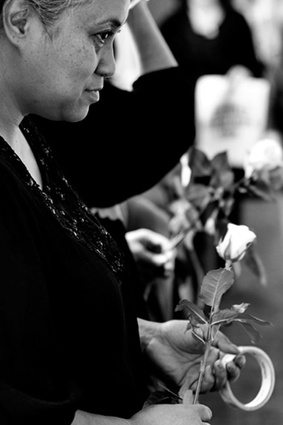Duty of Care
Sean Flanagan, co-editor of Block, offers his opinion on the recent changes announced at Unitec: Unitec's changes and the questions we face.
Just a few days into the New Year, 50 teachers from Unitec’s Design and Visual Arts department received their redundancy notices as part of the school’s restructure of design education. The change, spearheaded by the idea that professional educators can be supplanted by industry folk, has garnered recent media attention, with the Tertiary Education Union saying the loss of 50 from 53 of the department’s staff is one of the biggest shake-ups in the tertiary sector in recent times.
Mixed emotions must have accompanied the notice and the New Year it heralded. There will have been hope – hope the coming year is better than the last, hope that new opportunities arise, hope the mortgage can be covered, hope the family holds together under the strain. There will also be bitterness towards the forces, proponents, and processes of change. I have some personal knowledge of the turmoil facing many of these people as they struggle to find ways forward both professionally and personally. A good number face significant financial stresses, with questions about where and how to live with no regular income to cover life’s expenses. A publicly available video made by Unitec students offers some context to the redundancies and those affected.

The particulars of Unitec’s classic adventure in education are still to be made public - who the practitioners are who are qualified to teach and what in fact it is they are going to teach. And what the restructured course will look like is a mystery for returning students. Nonetheless, the general motives for the change have been marketed. Independent research amongst industry professionals in the creative sector reportedly identified a need for greater alignment between education and industry because graduates in the design sector were not work ready.
The response to this research and subsequent staff ‘consultation’ was a “reconceptualising of the traditional role of tertiary teachers.” Management propose they are looking to the future of design education, “aligning itself with a global trend,” by making a swathe of professional educators redundant and looking to “blur the boundaries” between the worlds of learning and working. They are to going to sound the trumpet for the “best creative professionals in the industry” and the best will apparently ride on in, bringing their talent to the classrooms to coach hundreds of students through real world projects. Some 17 staff in newly created ‘teaching manager’ positions are being deputised to wrangle the creatives whilst also bringing $20-30K a year into the Unitec coffers.
Whether the change is good is debatable. What is less debatable is an assessment of the process of change. And in this case, an assessment of whether the process is being conducted in a dignified manner is of importance to the practicing community. Every call Unitec makes to ‘the industry’ embroils us further in the process. Every statement about the role industry will play reinforces the idea that practitioners as a group endorse the change and the rationale and in some way sanction the redundancies of the Unitec 50. We are part of this process and part of an unfolding series of events that need to be carefully considered with regards to the way in which people, including ourselves, are being treated.
To date, the reasons for change Unitec have outlined are very general, but within these lie a number of points that deserve consideration. The first is that the change turns around a separation between education and practice. Separation is asserted on many occasions, generally along the lines of management’s research identifying a disconnect between employers and graduates. But separation is also latent in the tale of how the newly structured course will ‘blur boundaries’. The assertion is that change will in some way marry two things previously separated.
But on what grounds does the idea of separation stand? Answers to this turn around a supplementary question about how particular one wishes to get. For the current staff, the idea of a separation must appear suspect. If we were to ask any of them about their industry connections and listen to the ways in which they draw upon practitioners, one imagines we would hear quite a different story.
The intimate and intertwined nature of the design community is well known and the worlds of education and practice can more realistically be described as wedded. Educators often approach practitioners to help enrich their student’s experience. What’s more, they have a breadth of contacts to draw upon across a range of professional expertise, and they draw upon those contacts in a deliberate and pointed way.
A second point deserving consideration is the regular appeal to ‘the industry’ and the questions it raises about whether such a definite thing ever existed prior to the divorce. Is there in fact a coherent group of practitioners bound together by an expectation that they are to be served by education? Are we characterised by dissatisfaction with current graduates? Are we open to the idea of DIY-education – realizing that to get the graduates we want, we have to do the teaching as well as generate the work?
The idea that the industry exists as a definite thing, let alone as a group coherently backing the restructure and awaiting the call to teach, is a suspicious piece of reasoning. And a number of practitioners have already voiced concern over the assumptions made. In a recent Listener article, Pete Bossley is quoted saying he does not want graduates who know what he knows or think like he does. And in an open letter to Unitec management, Hamish Keith explained how, as a member of the professional panel reviewing the design and visual arts degree, he had concluded that the course was well aligned to the needs of industry and the community. Keith went on to say: “As industry representatives it is extremely ironic to discover belatedly that a view of industry that we do not recognise has been advanced as the rationale for unprecedented change.” Keith has never before encountered the industry Unitec describes.
There are concerns here for a practicing community framed as ‘the industry’. Management’s rhetoric is all about the restructure being undertaken in order that education better serve us. But, given suspicions about the existence of ‘the industry’, it is wholly possible that practitioners are being used as a means to an educational end. It will be a coup for Unitec to be able to build a marketing campaign around the image of the practitioner in the studio, independent of our qualifications to actually be there. Our presence will readily serve an end, that of window dressing the degree and making this design department look like something new on the education market.
A final idea to contend with is that this move is radical – an idea expressed in the description of the change as something focused on the future of education in a way that cannot rely on “educational paradigms of the past”. Here, a break with the past is implied.
In a number of ways, Unitec’s change relies on past paradigms, it just depends on how one wishes to define ‘the past’. Given the wedded nature of educators and practitioners it would be more accurate to describe the change as a revision of a current model of thought. Clearly there will be a different allocation of practitioner time to the course amongst other changes, but it is not in itself a radical educational move. Indeed, the claim that education is not serving industry is one of the most conventional claims an institution can make. Nonetheless, the claim to be radical is made and Unitec goes on to support its change by listing a number of other institutions that have already sanctioned the approach - Monash University, RMIT, the London College of Fashion etc. By offering a list of references, management seek to establish the authority of what they are doing by making reference to places that have done it before. That is, they are making historical connections to validate a course of action.
The conundrum of having to appeal to history to rationalize a course of action that claims to be a break with history is something that commonly besets radical artistic movements. For all manner of reasons, the radicals also need to be reasonable and therefore often historical. Unitec is no different and the rhetoric around the idea of being radical exhibits common tactics associated with creating a break.
If the idea of being radical involves a well-known manipulation, then to what end is that manipulation directed? What Unitec has certainly achieved is a radical annihilation of the department’s staff. Is the idea of a break with history an effort to rationalise a radical break with staff – to position them as collateral? Perhaps the question is, if you wish to revise the way you teach, do you necessarily have to make an entire department redundant? And what is not clear is whether the institutions Unitec cite as historical precedents also made radical redundancies when revising their education models. Does history show that revisions like this are inextricably tied to redundancies, or have other places made the move in an entirely different fashion? And if you reason change only in terms of it being a revision, does this complicate making radical redundancies?
The changes to the Design and Visual Arts department are, it seems, a done deal. And despite suspicions about the manipulation of reason, one senses that questions of reason are not a risk to the campaign. Those in management will hold the party line about blurring the boundaries between education and work by radically re-conceptualising education in the service of industry. In holding this line, one of their greatest assets is time.
Students will very soon know nothing of the way the course used to be. Along similar lines, the decimation of staff seems like an attempt to erase memory. Arguably the greatest risk to the success of the change has passed, largely due to the brilliant work of human resources and legal staff who plotted a course to mass redundancies that has, to date, closed down all avenues for staff and unions to take matters to the employment court.
As things unfold, it will be interesting to see who Unitec deem to be the “best creative professionals in the industry”. Such decisions could already be a done deal, but the on-going assertion that these people are ‘the best’ will have public impact. Unitec then becomes a player in shaping impressions of who is at the top of their game. But whatever the case, the importance for the practicing community is that there are moral questions to consider. And just because Unitec advertises that practitioners will teach, we have no duty to. We must, as best we can amidst the confusing rationale, try to reason things for ourselves. We are implicated in a process in which we have a duty to consider the treatment of human beings. And given the warning signs and what is at stake, nothing should simply go without saying. We have a duty to think things through carefully and to ask ourselves “what is the right thing to do?”
- This article first appeared in Block – The broadsheet of the Auckland branch of the New Zealand Institute of Architects











